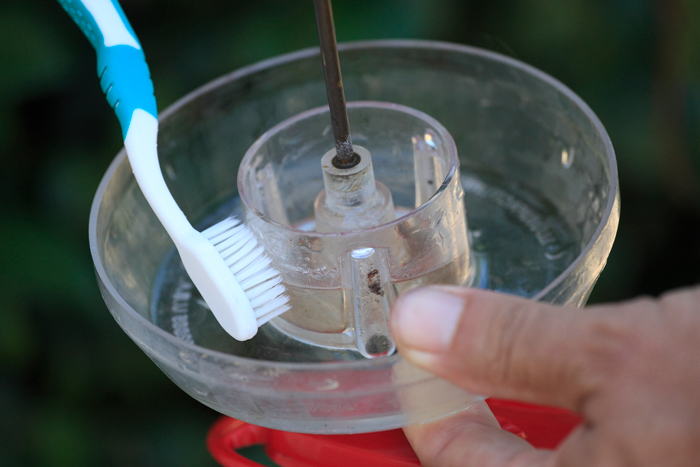A hummingbird feeder makes it easy to observe these winged wonders in action. But meticulous maintenance of the apparatus is critical for the health of these hovering houseguests.
Once you’ve felt a hummingbird’s heart beating in your hand, it can make these tough little hummers seem a little more delicate. True story: I’ve had to catch them in my own hands for rescues after they soared into a tent or a greenhouse.
It’s easy to observe these winged wonders in action with a hummingbird feeder. But meticulous maintenance of the feeder is critical for the health of these hovering houseguests.
Of course, my mother always seemed to expend a lot of effort to keep the feeders clean; only begrudgingly did I learn that this maintenance can make a critical difference between enjoying hummingbirds and making them sick.
So, in honor of Mother’s Day, here’s a few of my mother’s tips for taking care of wild hummingbirds.
1) If you keep a feeder, keep it clean – once a week in winter, and more often in summer. A dirty feeder can give a hummingbird a fungal infection, and these fungal infections are fatal, not only for the bird, but it can also be passed on to her young.
If you find black mold on the nectar ports, more extreme measures are needed: soak the feeder in a solution of 1/4 cup bleach to one gallon of water for one hour. Then rinse it thoroughly, no soap.
2) To help keep it clean, choose a feeder that’s very easy to clean in the first place. Mom finally settled on the HummZinger because she can remove the lid easily and reach everything inside. (In addition, the version with raised perches makes it easier to see the bird while it sips.)

Two indispensable tools for maintaining a hummingbird feeder: a toothbrush (for scrubbing out the dish) and a pipe cleaner (for cleaning mold from the ports.) These should be kept easily accessible right under the same sink where you wash the feeders. The National Audubon Society recommends cleaning with one part white vinegar to four parts water; after cleaning, wash the feeder out thoroughly.
3) Most importantly, never ever leave nectar out to ferment. As it would in a human, fermented nectar causes liver damage in hummingbirds. Taking the feeder down and bringing it inside is always a better choice than leaving it out to rot.
As a rule of thumb, only put out two days-worth of nectar during the summer. If it’s turned cloudy, it must be replaced. In summer this can sometimes happen in a single day; hanging the feeder in the shade may buy you a little more time between cleanings.
Remember, hummingbirds are wild birds, and they aren’t on life support from the feeder. Even in winter, hummingbirds derive most of their food from other sources – that’s what they spend all their time doing. A feeder just provides an easy place to see them in action, but this is mostly for your benefit.
So, if you’re going to be gone for a couple of weeks this summer, just take the feeder down, unless you have a meticulous neighbor (or son) to look after it. Better yet, plant some perennials to keep them fed all year long without the need for constant maintenance from you.


